Today we are going to get Mishra’s Factory under the microscope to talk about “land-animation” effects and repeat the card types.
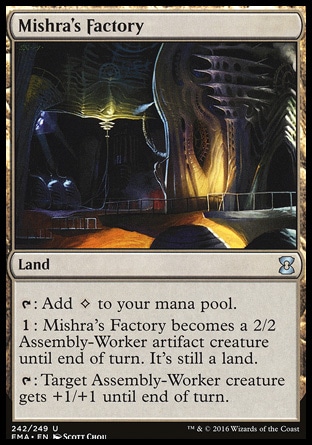
Oracle Text:
Land
{T}: Add {C}.
{1}: Mishra's Factory becomes a 2/2 Assembly-Worker artifact creature until end of turn. It's still a land.
{T}: Target Assembly-Worker creature gets +1/+1 until end of turn.
Mishra’s factory is a curious card because as a permanent it can be of three card types at once on any turn. The first thing we need to remark is that Mishra’s Factory is a nonbasic land. It is so because there is no word “basic” in its type line. This word may appear there, though it’s a very rare case, for instance if Mishra’s factory somehow becomes a copy of a basic land.
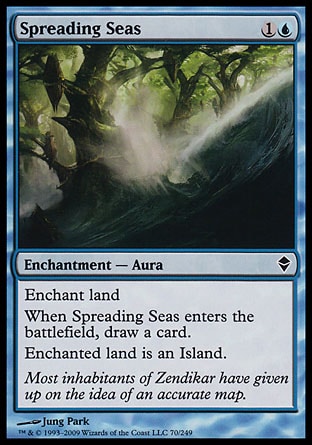
If your cunning opponent spreads seas over your Mishra’s Factory, it becomes an Island, loses its abilities and gains the mana ability “{TAP}: add {U}”. However, Mishra’s Factory doesn’t change its name and doesn’t become a basic land.

Blood Moon overwrites the subtype of nonbasic lands to Mountain and deprives those lands of the abilities they had before.
Mishra’s Factory becomes a Mountain, loses all abilities and gains the mana ability “{TAP}: add {R}”.
If an animated Mishra’s Factory falls under a type-changing effect, it will remain a 2/2 artifact creature with subtype Assembly-Worker, but it gets a new land type. If the new land type is a basic land type, Mishra’s Factory also loses all abilities related to its text.
All three abilities of Mishra’s Factory are activated. Therefore, they may be activated at any time you have priority. But that’s not all. Two of them have a tap symbol in their cost. This immediately incurs limitations on their use. If Mishra’s Factory is a creature, you may activate such abilities only if it has been under your control continuously since the beginning of your most recent turn.
Mishra’s Factory’s second and third abilities may be countered (Disallow).
Mishra’s Factory’s first ability is a mana ability, which means that it doesn’t use the stack, and that it may be activated without having priority at the moment you need to make a mana payment. For instance, while casting a spell.
I would like to stress here for my newbie readers that tapping a land does not automatically mean any ability being activated. When the tapping is a cost, as with the first and third abilities of Mishra’s Factory, then this tapping is the result of activating any one specific ability. When we tap the permanent we pay the activation cost. If that ability is a mana ability with the tap symbol in its cost, such tap is defined as “tap a permanent for mana”. Mishra’s Factory’s first ability matches all these.
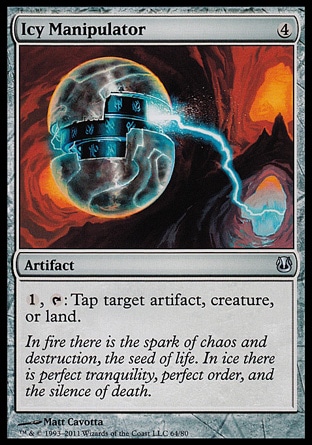
If the land becomes tapped through Icy Manipulator, it doesn’t mean that an ability that requires to just tap it becomes activated. But you may activate Mishra’s Factory’s ability in response to Icy Manipulator, so you will render the opponent’s action useless.
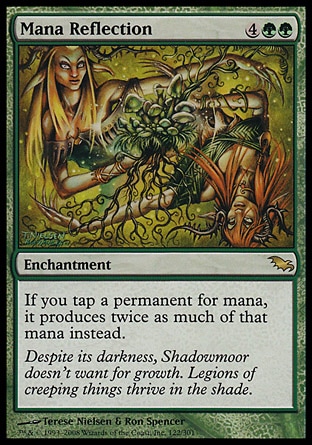
Mana Reflection’s effect will double the mana gained through Mishra’s Factory’s first ability, but it will not react to activating the third ability, or this object becoming tapped through an effect such as Icy Manipulator’s.
Mishra’s Factory’s second ability turns it into an artifact creature, preserving it as a land as well. After this ability resolves, Mishra’s Factory will have the following characteristics:

- Name:
- Mishra’s Factory
- Card type:
- Land, Creature, Artifact
- Subtype:
- Assembly-Worker
- Color:
- none
- Power/Toughness:
- 2/2
- Text:
- {T}: Add {1}.
{1}: Mishra’s Factory becomes a 2/2 Assembly-Worker artifact creature until end of turn. It’s still a land.
{T}: Target Assembly-Worker creature gets +1/+1 until end of turn.
Not all of these are copiable values.
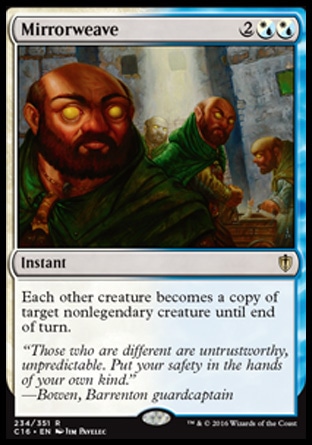
The opponent declares a lethal attack with regular creatureas. You animate your Mishra’s Factory and cast Mirrorweave targeting it: all creatures become… unanimated Mishra’s Factories and leave combat.
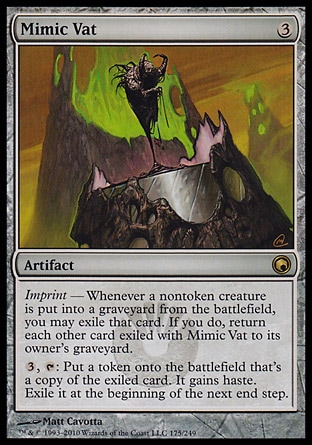
An animated Mishra’s Factory will trigger Mimic Vat’s ability, and the player in control of Mimic Vat may exile it. Then, by activating Mimic Vat he can get a token of an unanimated Mishra’s Factory.
Mishra’s Factory’s name dosn’t change!
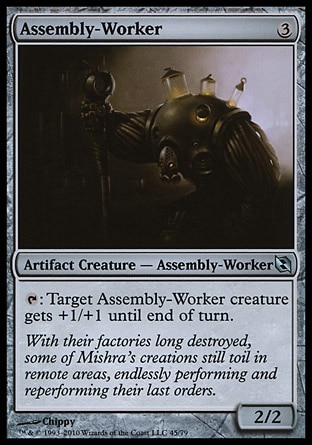
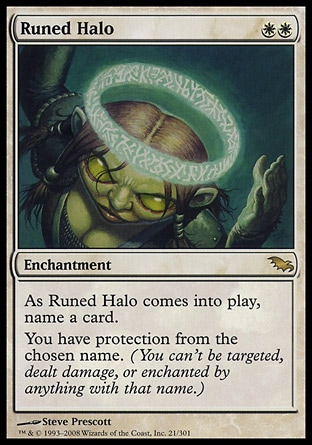
In fact, Decimate may target it three times: as an artifact, a creature and a land.
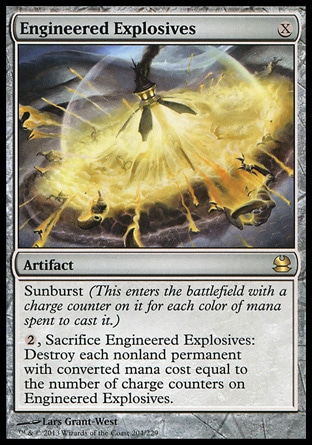
Engineered Explosives’ ability destroys nonland permanents, whereas Mishra’s Factory is a land even in its animated form. It doesn’t fall under this effect.
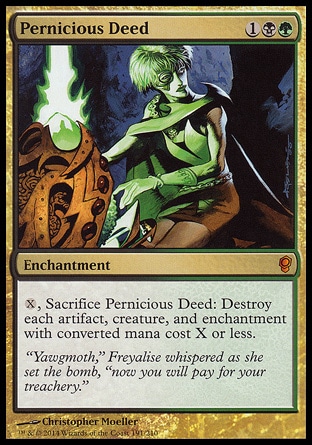
An animated Mishra’s Factory is a creature and an artifact, it is a “double match” for Pernicious Deed’s effect, so it will be destroyed.
As I’ve already mentioned, an animated Mishra’s Factory becomes a creature, which makes us wonder how long it has been under our control. It doesn’t matter when Mishra’s Factory became a creature; what matters is how long we have been controlling it.
If you put Mishra’s Factory onto the battlefield and then activate its second ability, which turns Mishra’s Factory into a creature, it cannot attack this turn, nor can you activate its first or third ability, unless it gains Haste.
If an animated Mishra’s Factory may attack and you would like it to, it should be animated before the Declare attackers step. The last chance to animate it is at the beginning of combat step.


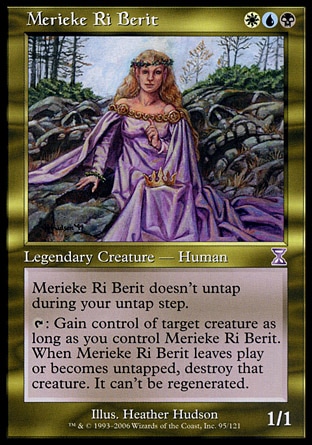
If any of these cards' effect “snatches” an animated Mishra’s Factory from your opponent, it will not return to his control at the end of current turn just because it stops being a creature. Effects of this kind aren’t concerned with the fact that the object changes its essence. Their expiration doesn’t lie with that.
You lose control over Mishra’s Factory as soon as Sower of Temptation leaves the battlefield and as Vedalken Shackles becomes untapped.
In the case with Merieke Ri Berit, her untapping or moving to another zone will trigger the ability, which will destroy Mishra’s Factory on resolution.
It’s an all different story when we deal with auras that cannot enchant lands:
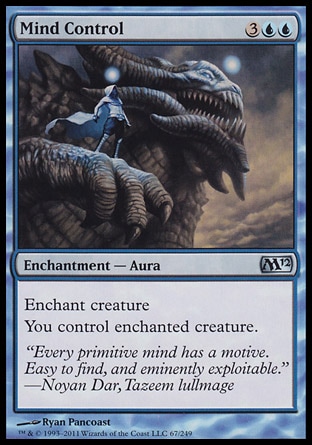

While Mishra’s Factory is an artifact creature, it may be enchanted with both Mind Control and Steal Artifact. As soon as the animation effect ends, such auras “fall off” upon the nearest SBA check.
Also worth of a note, any counters that appear on Mishra’s Factory whilst it is a creature do not go anywhere. They will cease to cause any effect on it if they only affect creatures, until the land becomes a creature again. These include +1/+1 counters, for instance.
Now, a crazy question about an animated Mishra’s Factory:
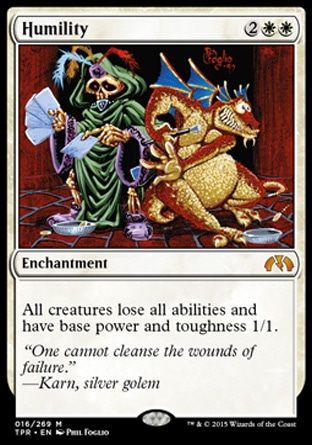
— How does Humility interact with Mishra’s Factory’s second ability?
— Both Humility’s effect and Mishra’s Factory’s effect set the power and toughness to certain values. They are applied at layer 7b. They do not depend on each other, so the latest one wins. If you animate Mishra’s Factory with a Humility already on the battlefield, you get a 2/2 creature. If Humility appears on the field when Mishra’s factory is a creature, Humility wins out — you will have a 1/1.
Let’s have one last example about the layers:
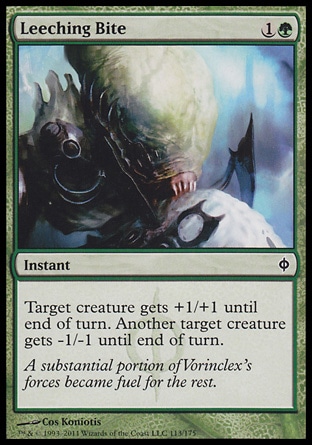
If an animated Mishra’s Factory falls under Leeching Bite’s negative effect, its repeated animation will not return the 2/2 P/T values. That is so because Leeching Bite’s effect is applied at layer 7c which is always after Mishra’s Factory’s effect found at layer 7b.
Mishra’s Factory’s third ability may target only creatures with subtype Assembly-Worker. It may target itself. It is perfectly legal to “animate” Mishra’s Factory with its second ability, block with it, then “pump” it with its third ability (as long as it isn’t “summoning-sick”, sure thing).



Aside from itself and other Mishra’s Factories, you may “pump” tokens from Urza’s Factory; animated Mutavault and other creatures that have all creature types, and of course, an Assembly-Worker in the flesh, so to say.
Curious one:

Mishra’s Factory and other manlands may be used to save permanents like Pyrohemia. It is sufficient to animate the land in response to Pyrohemia’s triggered ability, then nothing happens on resolution.
Do keep in mind that Pyrohemia’s trigger goes off at the beginning of the end step, and the effect of Mishra’s Factory’s second ability wears out in the cleanup step.
I wanted to finish with this marvelous works of art.
Players often ask the judges about the legality of altered cards. The universal answer is: the head judge has the last word on it.
In general, the requirements are as follows:
- the card must be recognizable;
- the card may not contain any strategic tips;
- the card may not have any offensive imagery;
- the alterations on the card must not overlay the card’s name and mana cost.
It shouldn’t be standing out of the deck (sometimes there is a problem with the density of the paint layer).
Personally I would probably prohibit this masterpiece of art in tournament play, since it is impossible to tell whether or not it had either white or black border before the alteration.

Source PrinceEnder
- ⇑ Manlands — slang term for lands that may be “animated”, i.e. turned into a creature.
- ⇑ Note that Urza’s Factory tokens aren’t copies of the Assembly-Worker card. They have no abilities at all.
Translated by Witas Spasovski



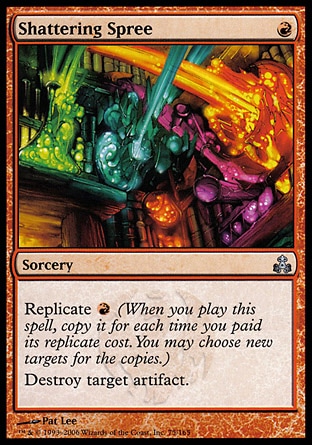
If your cunning but ignorant of rules opponent puts Runed Halo onto the battlefield and calls Assembly-Worker, he will have protection form the card with the name Assembly-Worker, but not from the animated Mishra’s Factory, since it keeps its name, and simply gets the subtype Assembly-Worker.